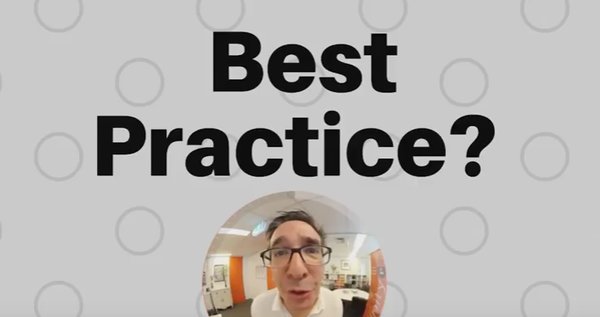This is the sixth in a series of one-minute videos that address one of the many complex challenges facing marketing, media and advertising today. The Golden Minute series is an attempt to prove Albert Einstein right when he said “The definition of genius is taking the complex and making it simple”.
But he also said, “Everything should be made as simple as possible, but not simpler”. So we will leave it for you to judge. Please let us know here if there is a topic you would like us to cover in a Golden Minute.
Many of the challenges marketers are facing are new. Digital technology has had a major impact in disrupting all aspects of business and particularly marketing because it has disrupted consumer behaviour too.
Therefore, while we agree that the foundations of marketing and marketing strategy are still essential, there are new challenges arising in the implementation because of the increased complexity and constant change.
In the face of these new challenges and complexity, many of the old tried and true solutions no longer work. Yet it is human nature to stick with what you know or what has been tried and tested, rather than trying something new.
But at what point do you give up on the usual solution and try something new. To quote Albert Einstein again, “Insanity is doing the same thing over and over again expecting a different outcome”. This is also one of my favourite all-time quotes because it sums up the futility that occurs when you stop learning.
A proven methodology but customised outcomes
Over the past 17 years, we have been engaged in a wide range of projects for a diverse range of clients and addressed some of the most unique challenges imaginable. But what we have developed is a proven approach for clearly defining and framing the problem and then exploring the possible options for addressing the issues before collectively agreeing on the best solution.
Taking a qualitative and quantitative approach means we are able to define the problem beyond simple opinion and define and frame it using fact-based insights.
One of the main advantages of engaging a consultant is they are able to cut through the clutter to the core of the problem or issue, see beyond the symptoms, and then frame it in the context and circumstances in which it occurs to be able to develop a solution to a unique challenge.
The next stage is instead of jumping to the most obvious solution, we explore a range of options. We do this for a number of reasons. First, it means that we have considered the solutions beyond the most obvious and secondly we can then provide a range of solutions with positives, negatives and consequences of each for discussion.
The process of defining the options is not selection, but design, in that we design the solution specifically to the insights and circumstances of the problem, informed by previous project solutions.
Best practice, emerging practice, or next practice?
Interestingly, when we present the solutions for discussion it is typical for someone to ask who else is using this option. It is difficult to answer because each solution is unique in some way as each situation is unique.
Yes, there are certainly similarities between different solutions for different clients, but it is rarely identical. But there are also times when we propose a unique solution because the challenge or problem and circumstances we are facing is unique.
We understand that the person asking is really asking for surety in the idea, that it has been tried and tested. They are risk-averse and are looking for a long list of other people who have adopted this solution to reassure them of the efficacy.
Sometimes they ask if the solution is ‘best practice’. While the methodology that gets us to the solution is tried and tested, best practice, the outcomes are not necessarily best practice. It certainly draws on best practice, but because we are solving unique challenges it is usually emerging practice and next practice. That is because it has been developed in response to challenges and issues that are emerging or next to be addressed by the industry.
But as I wrote previously, we offer a number of solutions for consideration. Usually, there is a best practice option, being one that is tried and tested. Then there is the emerging practice solution, which means it is emerging as a solution to a particularly new challenge or problem. And there is the next practice solution, which offers an innovative solution to a unique problem or challenge.
The conversation that ensues is simply about which one is right for you.
Golden Minute Script
Albert Einstein famously said, “We cannot solve our problems with the same thinking we used to create them”.
Yet often when you create a unique solution to a new problem the first question asked is “Who else is doing this?”
Well if someone else is doing it, it is not necessarily best practice.
In fact, it is more likely to be common practice.
Simply doing what everyone else is doing gives no advantage.
And isn’t doing what everyone else has done the very thing that created the problem in the first place?
No one else is experiencing the exact same circumstances.
So rather than looking to common practice, it is better to consider emerging practice, or next practice, in your search for best practice.
Because it is only best practice when it delivers the results you need.
Ensure your marketing strategy is not only robust but also agile. TrinityP3 can assist by reviewing your strategy against your business and marketing objectives


